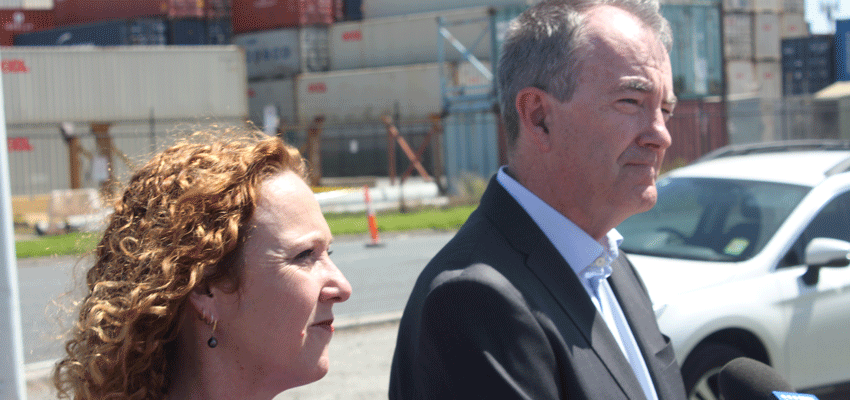STATE freight minister Melissa Horne has announced a $125m Port Rail Transformation Project, aimed at getting more freight off roads and onto rail.
Features are to include:
- A new rail terminal at East Swanson Dock connecting directly with the East Swanson container terminal; this rail terminal is to consist of two tracks, each able to handle a 600metre long train;
- Upgraded access, connections and sidings within the port; these modifications are designed to support up to 1500metre-long regional Victoria and interstate trains and provide operational flexibility for all trains accessing the port.
The project is part of the port’s Rail Access Strategy, a key condition of the privatisation of the facility.
Ms Horne said the announcement was “the first step in getting more trucks off roads and more freight onto rail through the on-dock solution at the Port of Melbourne”.
The project would, Ms Horne said, “really benefit Victorian exporters by being able to provide that vital rail link to get freight onto rail”.
Port of Melbourne CEO Brendan Bourke said the port rail solution was “a critical and missing link in Melbourne’s transport and supply chain network”.
“It expands the rail offering for freight and delivers environmental benefits,” Mr Bourke said.
“Port rail shuttle trains will have a capacity of 84 TEU containers, in comparison to a B-Double truck having a capacity of three TEU,” he said.
“This project also supports regional exports by taking cost out of the rail supply chain.”
The project is to be bankrolled via an increase in the tariff on full import containers of $9.75 per TEU to take place no earlier than 1 April, 2020.
“We are committed to investing in the port – It is a key driver of economic activity in the state,” Mr Bourke said.
“We want to move freight in and out of the port more quickly and to deliver the everyday goods needed to support our daily lives.”
Timeline:
- Existing land and assets acquisition – 2019-2020
- New land and asset arrangements provision – 2020
- Rail terminal improvements – 2020-2023
- Operating protocol implementation – 2020-2023.

